- Home
- C. S. Lewis
Narrative Poems
Narrative Poems Read online
CONTENTS
PREFACE
DYMER PREFACE BY THE AUTHOR TO THE 1950 EDITION OF DYMER
CANTO I
CANTO II
CANTO III
CANTO IV
CANTO V
CANTO VI
CANTO VII
CANTO VIII
CANTO IX
LAUNCELOT
THE NAMELESS ISLE
THE QUEEN OF DRUM: A STORY IN FIVE CANTOS CANTO I
CANTO II
CANTO III
CANTO IV
CANTO V
NOTES
ABOUT THE AUTHOR
ALSO BY C. S. LEWIS
FURTHER READING
CREDITS
COPYRIGHT
ABOUT THE PUBLISHER
PREFACE
This book contains all the narrative poems by C. S. Lewis which, as far as I know, are extant, and they can be enjoyed without reading the preface, which is not a critical assessment, but is rather intended to provide them with some historical background.
Lewis wrote his first poems in the ‘little end room’ at his home, Little Lea, in Belfast before he went to his first school at the age of ten. He disliked all the schools he attended and the English ones were given fictitious names in his autobiography, Surprised by Joy (1955). Like so many of his prose works, it was originally composed in verse.
The romantic imagination was already strong in Lewis when he went to Wynyard School in Watford, Hertfordshire (‘Belsen’ in Surprised by Joy), where he was a boarder from 1908–10. From Wynyard he was sent to Campbell College, Belfast, for one year (1910) and from there to Cherbourg House in Malvern (called ‘Chartres’ in his autobiography) where he was a student from 1911–13. It was at Cherbourg House, between the summers of 1912 and 1913, that he began a long poem on the Nibelung’s Ring. What makes the 801 lines of the unfinished poem such a remarkable achievement for a boy of 14 and 15 is that the young poet’s only source was a series of synopses of Wagnerian operas published in a periodical of the gramophone trade called Soundbox.1
From 1913–14 Lewis was a student at Malvern College (‘Wyvern’ in Surprised by Joy). While there he kept up a correspondence with his friend Arthur Greeves, from Ulster, with whom he shared a taste for Norse mythology. In his weekly letters to Greeves he urged him to collaborate on a tragedy, Norse in subject and Greek in form. We do not know if Greeves ever attempted his share in this musical drama, but I learn from Major Lewis that Lewis completed the lyric text of Loki Bound that occupied thirty-two pages of a folio notebook. Loki’s opening speech, for which ‘sombre and eerie’ music is required (this was to be Greeves’s contribution) begins:
This is the awful city of the gods,
Founded on high to overlook the world;
And yonder gabled hall, whose golden roof
With two fold force, is Valhall. Yonder throne
That crowns th’ eternal city’s highest peak
Is Odin’s throne, whence once the impious Frey
With ill-starred passion eyed the demon maid.2
Following his year at Malvern, Lewis was sent as a private pupil to W. T. Kirkpatrick at Great Bookham in Surrey. It was here that he wrote most of the fifty-two short poems which he later copied into a notebook under the title Metrical Meditations of a Cod;3 most of these poems, with a few additions and alterations, being later published as Spirits in Bondage under the pseudonym Clive Hamilton (Heinemann, London, 1919). We learn from his letters to Greeves at this time not only of his growing interest in the Arthurian legends and The Faerie Queene, but that he had begun a prose romance entitled The Quest of Bleheris. I do not know how far he got with this story before he began—what may interest us more—a prose version of the Dymer story as well as a long narrative poem on Medea’s Childhood.
Both the prose Dymer and Medea had to be put aside when Lewis went up to Oxford as a scholar of University College in April 1917. Before he had completed his first term he was recruited into the army and, after nearly six months in France, was wounded and sent home. He had continued his reading of the classics and English literature even in the trenches and, during his convalescence in an army hospital at Eastbourne, he set about preparing his Metrical Meditations for publication. Yet it seems his deep love for verse and story could only be satisfied by writing long narrative poems. Thus, while he was still at Eastbourne, he continued his old Bookham version of Medea’s Childhood. Dissatisfied with the poem he quietly made the 300 lines he had written into spills for lighting his pipe, returning with renewed interest to Dymer, which had now become a poem. I quote part of a letter he wrote to Arthur Greeves in December 1918, because the ideas in it strike me as being very similar to those Lewis mentions in the preface to the 1950 edition of Dymer printed in this book.
I have just finished a short narrative, which is a verse version of our old friend ‘Dymer’, greatly reduced & altered to my new ideas. The main idea is that of development by self-destruction, both of individuals & species (as man produces man only to conquer her [sic], & man produces a future & higher generation to conquer the ideals of the last, or again as an individual produces a nobler mood to undo all that to-day’s has done). The background proceeds on the old assumption of good outside & opposed to the cosmic order. It is written in the metre of Venus and Adonis: ‘Dymer’ is changed to ‘Ask’ (you remember Ask and Embla in the Norse myths) & it is in the 3rd person under the the title of ‘The Redemption of Ask’.4
In January 1919 Lewis returned to Oxford and took a First in Honour Mods. (1920), a First in Greats (1922), and a First in English (1923). All this time he was working on several narrative poems. In the Easter Vacation of 1919 he wrote to Arthur Greeves about a poem on Merlin and Nimue in blank verse as well as a new version of Medea’s Childhood. ‘The “Medea”’, he wrote to Greeves in July 1919, ‘is very nearly finished, and will be about twelve hundred lines. The main interest hangs on the family relations of the horrible old king and his daughter, whom I imagine as a sort of Emily Brontë, only more of a wolf—some of her father’s bad blood coming out. The defect of the poem as a whole will be—heaven help us!—dullness.’ Lewis was a severe critic of his own poetry and the new Medea had an even shorter life than the first. In September of 1919 he wrote to Greeves saying:
I had the pleasure of looking over my ‘Medea’ of which I told you and finding that it was all hopeless and only fit for the fire! Nothing daunted however I bade it a long farewell—poor still-born—and consoled myself by turning the ‘Nimue’ from a monologue into a narrative, in which form it will do. It appears in ‘stanzas’ of my own invention and is rather indebted to ‘St Agnes Eve’ with touches of Christabel . . . It relates the events of a single evening—Merlin coming back & catching Nimue at last.
Lewis kept a diary off and on from 1922 to 1930, and besides frequent references to other narrative poems such as Wild Hunt, Foster, Helen, and Sigrid (none of which I have ever seen or believe to be extant), I discover that Nimue was still ‘alive’ as late as April 1922. One of the most intriguing entries comes on April 2nd, 1922: ‘I sat in my own bedroom by an open window and started on a poem on Dymer in rhyme royal.’5 We learn from Lewis’s preface to the 1950 edition of Dymer about as much as we ever shall about the meaning of the poem. What we discover from his diaries is that he worked on the poem almost daily from 1922 until its original publication in 1926. His moments of satisfaction with the poem seem to be about as frequent as his moments of dissatisfaction, and he appears to have been much influenced by the advice of his friends Owen Barfield, Cecil Harwood, and Leo Baker.
The whole text of Dymer was in existence in April of 1924, but Lewis continued to revise lines and stanzas until he was at last satisfied. Indeed, he continued to revise the poem until and dur
ing its appearance in galley-proofs.6
As far as I know, the only manuscript of Dymer to escape being burnt consists of eighty-six pages of rough drafts of Cantos VI, VII, VIII, and IX, which were written in one of Lewis’s notebooks now in my possession. My guess is that they were composed in 1924–25 because of their close resemblance to the printed version. I have made one discovery from studying these rough drafts which I consider worth recording here. The idea of making a book end with the author waking from a dream appealed very strongly to Lewis, as can be seen from The Pilgrim’s Regress and The Great Divorce. Apparently Lewis toyed with the idea of making the story of Dymer a dream, for in my manuscript of Dymer Lewis added one further stanza after Canto IX, 35, in which he, the dreamer, awakes.
Though I have never seen his poem on Helen, the daughter of Zeus and Leda became the central character in Lewis’s unfinished novel After Ten Years.7 And Merlin, with quite a different purpose than revenge on Nimue, found a significant place in That Hideous Strength.
Another of Lewis’s novels which had its origins in verse is Till We Have Faces, a reinterpretation of the myth of Cupid and Psyche as told by Apuleieus. In his diary for November 23rd, 1922, he wrote: ‘I went out for a walk . . . thinking how to make a masque or play of Psyche and Caspian.’8 Then, on September 9th, 1923, he wrote: ‘My head was very full of my old idea of a poem on my version of the Cupid and Psyche story in which Psyche’s sister would not be jealous, but unable to see anything but moors when Psyche showed her the palace. I have tried it twice before, once in couplet and once in ballad form.9 Fortunately, seventy-eight lines of the version in couplets survive.
We need a few biographical facts before we discuss the other three narrative poems in this book. On the original publication of Dymer in 1926 Lewis was disappointed and believed that he had unmistakably failed as a poet. His unhappiness was, however, partly counterbalanced by his election to a fellowship in English language and literature at Magdalen College, Oxford, in 1925. This meant that his future did not depend upon his being a successful poet, and with a settled income his financial worries were lightened. He was, nevertheless, disheartened because the modern world, he felt, would not make the effort to read long narrative poems. What he saw in its place was the growing popularity of the new avant-garde poets such as T. S. Eliot, whose poetry he could never learn to like. But, seen in perspective, all this seems of little significance beside his conversion to Christianity, which took place during the years 1929–31 and affected everything he wrote afterwards.
A few years later Lewis established himself as a scholar and writer, and, beginning with the publication of The Allegory of Love in 1936, he never looked back. On the other hand, nor did he ever, I think, give up hope that someone would write a narrative poem that he could add to his favourites: The Faerie Queene, The Prelude, The Ring and the Book, and The Earthly Paradise. Nor could he give up writing, primarily for his own satisfaction, short poems, some of which he published in various periodicals under the pseudonym ‘Nat Whilk’.10 Most of these short poems I collected after his death and published as Poems (Bles, London, 1964). He wrote some longer poems as well but the modern hostility to romanticism was contrary to his taste and none of these were published in his lifetime. The only ones which have survived are those published in this book.
There is little I can say of Launcelot except that it reflects his deep love for the ‘matter of Britain’ (especially Malory) and, judging from the handwriting, it was probably written in the early 1930s. It has, I think, survived simply and solely because it was written in one of the notebooks which contains some of his lecture notes on renaissance literature.
As a tutor in English literature at Magdalen College, he was required to teach his students Old English. It was, I think, because he loved the Old English alliterative line, and because he always wanted to write a long story in verse, that he composed The Nameless Isle (my title). This poem, which was fair-copied into a notebook and dated ‘Aug. 1930’, is headed by a short introduction on the alliterative line which can be found in Note 2.11
And now we come to The Queen of Drum which I consider, without doubt, Lewis’s best poem. It has a long and interesting history and spans both his atheist and his Christian years. It is first mentioned in his diary for January 16th, 1927, where he writes: ‘I . . . worked on the first chunk of the King of Drum, wh. is to consist, I hope, of three short chunks—about 130 lines each. This chunk is a new version of a piece I began writing about two years ago, wh. in itself was a re-writing of the “Wild Hunt” (about 1920) which in its turn was based on something I started in Bristol in 1918.’12 On January 21st, 1927, he wrote: ‘[I] settled down . . . to “The King of Drum”. Produced about 20 lines for the opening of the next chunk, in a metre I have never struck before (rhythm of O.E. verse, but riming [sic]), with very little effort and greatly to my satisfaction. I also began to simmer with ideas for the further development of the story.’13 Lewis mentioned the Drum story in his diary almost every day, but the next revealing entry comes on February 6th, 1927: ‘I spent the morning writing, got over the King’s first interview with the Queen and made a start on the “College meeting”.’14 Suddenly the Queen of Drum emerges into greater prominence, for he writes on February 27th 1927: ‘[I] tried desperately to re-write the Queen’s speech in the Drum poem all morning without the slightest success. The old difficulty of smelting down a nasty little bit of factual stuff (the Queen’s conviction of the others) into poetry. One only exceeds in expanding it into rhetoric.’15
The ‘something’ Lewis wrote in Bristol in 1918 was, I suspect, a poem entitled Hippolytus about which he wrote to Arthur Greeves in September 1919. Hippolytus then became Wild Hunt, which he also wrote to Greeves about in June of 1920. Thus we move, if I am correct, from Hippolytus to Wild Hunt to the ‘King of Drum’ and finally, by degrees, to the finished poem The Queen of Drum.
There is evidence for this. In the same notebook in which the Cupid and Psyche fragment was found, there were ninety-six lines of a poem about Hippolytus. Hippolytus was, I suspect, the hero of Wild Hunt, because following these ninety-six lines was the fragment of another poem told in often the same language except that Hippolytus had become the King of Drum.
My guess is that The Queen of Drum must date from about 1933–34 when the Führer of the Nazis was still a less familiar figure than the Duce of the Fascists. This I say because of what appears to me very convincing ‘internal evidence’. I know that it was not composed later than 1938 because Lewis sent the manuscript to John Masefield for his criticism, and, though none of Masefield’s letters to Lewis is dated, the envelope in which he returned the poem to Lewis is postmarked June 3rd, 1938. Masefield’s letters can be found in Note 3.
Some readers may wonder what the Dymer story is about, but I do not anticipate that they will find a similar difficulty with The Queen of Drum. Furthermore, the author is in perfect control of his verse-medium, which helps him to tell his story. Besides the poem’s poetical merits, I would say that The Queen of Drum is a Christian work, though not written from Lewis’s usual objective basis: the Christianity emerges, and even the theme of Drumland (Romanticism) is developed on its own merits, and not as a Christian byway.
Dymer is the only poem in this book which has been published before: in 1926 under the pseudonym Clive Hamilton, and in 1950 under the author’s own name. Launcelot and The Nameless Isle were in Lewis’s handwriting, and The Queen of Drum in typescript. Because Lewis did not prepare the last three poems for publication, I have taken the liberty of correcting errors in spelling and punctuation. Trusting that they will prove of interest to some readers, I have preserved all the author’s alternative readings, which are printed in the footnotes.
I am grateful to J. M. Dent & Sons Ltd for permission to reprint Dymer, and to Major W. H. Lewis and the Trustees of C. S. Lewis’s Estate for allowing me to publish the other poems in this book. I wish also to express my gratitude to The Society of Authors as the literary represent
ative of the Estate of John Masefield for permission to publish his letters to Lewis. It is a pleasure to name publicly my friends Dr and Mrs Austin Farrer, Mr Roger Lancelyn Green, Mr Owen Barfield, Professor John Lawlor, and Mr Spiros-Sitaridis, who, by their encouragement and wise advice, helped me in editing these poems.
WALTER HOOPER
May 1969
Jesus College, Oxford
DYMER
PREFACE BY THE AUTHOR TO THE 1950 EDITION OF DYMER
At its original appearance in 1926, Dymer, like many better books, found some good reviews and almost no readers. The idea of disturbing its repose in the grave now comes from its publishers, not from me, but I have a reason for wishing to be present at the exhumation. Nearly a quarter of a century has gone since I wrote it, and in that time things have changed both within me and round me; my old poem might be misunderstood by those who now read it for the first time.
I am told that the Persian poets draw a distinction between poetry which they have ‘found’ and poetry which they have ‘brought’: if you like, between the given and the invented, though they wisely refuse to identify this with the distinction between good and bad. Their terminology applies with unusual clarity to my poem. What I ‘found’, what simply ‘came to me’, was the story of a man who, on some mysterious bride, begets a monster: which monster, as soon as it has killed its father, becomes a god. This story arrived, complete, in my mind somewhere about my seventeenth year. To the best of my knowledge I did not consciously or voluntarily invent it, nor was it, in the plain sense of that word, a dream. All I know about it is that there was a time when it was not there, and then presently a time when it was. Every one may allegorise it or psychoanalyse it as he pleases: and if I did so myself my interpretations would have no more authority than anyone else’s.
The Platonic and totalitarian state from which Dymer escapes in Canto I was a natural invention for one who detested the state in Plato’s Republic as much as he liked everything else in Plato, and who was, by temperament, an extreme anarchist. I put into it my hatred of my public school and my recent hatred of the army. But I was already critical of my own anarchism. There had been a time when the sense of defiant and almost drunken liberation which fills the first two acts of Siegfried had completely satisfied me. Now, I thought, I knew better. My hero therefore must go through his Siegfried moment in Cantos I and II and find in Canto IV what really comes of that mood in the end. For it seemed to me that two opposite forces in man tended equally to revolt. The one criticises and at need defies civilisation because it is not good enough, the other stabs it from below and behind because it is already too good for total baseness to endure. The hero who dethrones a tyrant will therefore be first fêted and afterwards murdered by the rabble who feel a disinterested hatred of order and reason as such. Hence, in Canto IV, Bran’s revolt which at once parodies and punishes Dymer’s. It will be remembered that, when I wrote, the first horrors of the Russian Revolution were still fresh in every one’s mind; and in my own country, Ulster, we had had opportunities of observing the daemonic character of popular political ‘causes’.

 The Lion, the Witch, and the Wardrobe
The Lion, the Witch, and the Wardrobe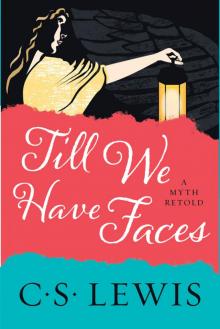 Till We Have Faces
Till We Have Faces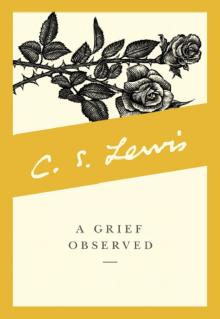 A Grief Observed
A Grief Observed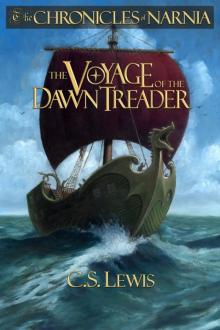 The Voyage of the Dawn Treader
The Voyage of the Dawn Treader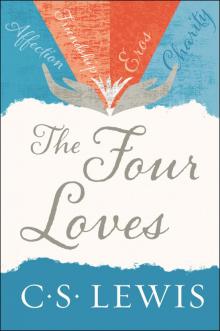 The Four Loves
The Four Loves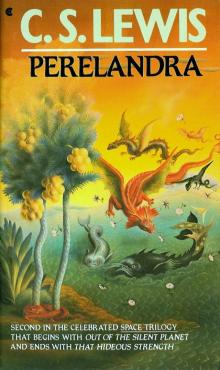 Perelandra
Perelandra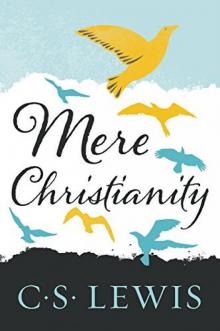 Mere Christianity
Mere Christianity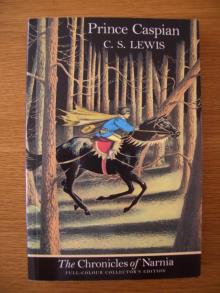 Prince Caspian
Prince Caspian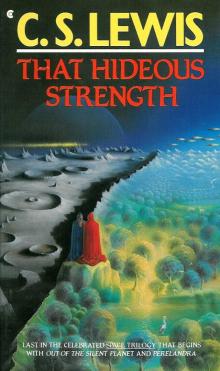 That Hideous Strength
That Hideous Strength The Magicians Nephew
The Magicians Nephew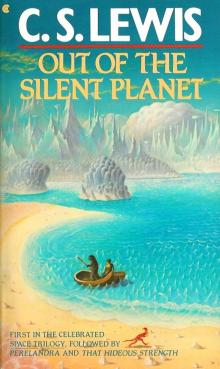 Out of the Silent Planet
Out of the Silent Planet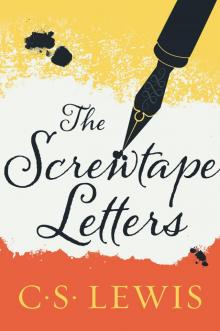 The Screwtape Letters
The Screwtape Letters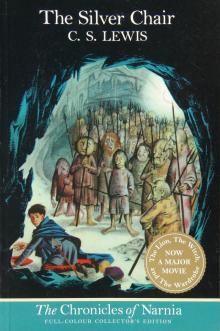 The Silver Chair
The Silver Chair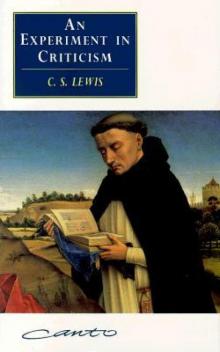 An Experiment in Criticism
An Experiment in Criticism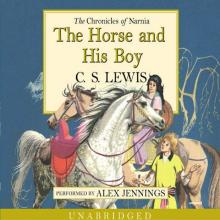 The Horse and His Boy
The Horse and His Boy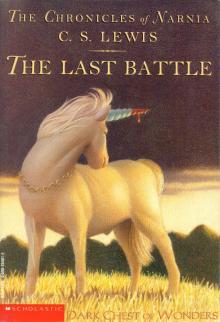 The Last Battle
The Last Battle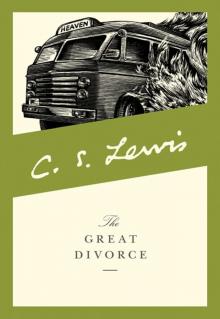 The Great Divorce
The Great Divorce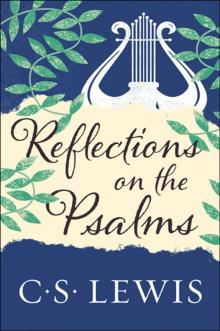 Reflections on the Psalms
Reflections on the Psalms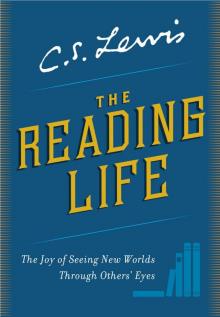 The Reading Life
The Reading Life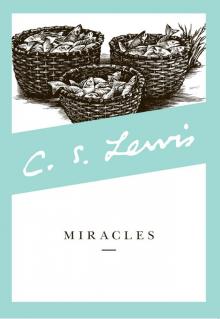 Miracles
Miracles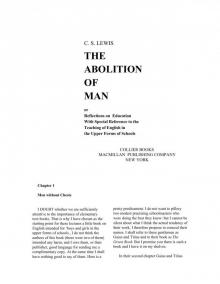 Lewis new
Lewis new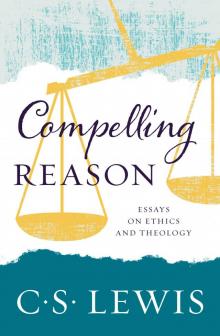 Compelling Reason
Compelling Reason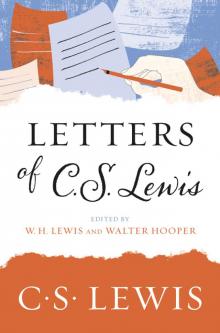 Letters of C. S. Lewis
Letters of C. S. Lewis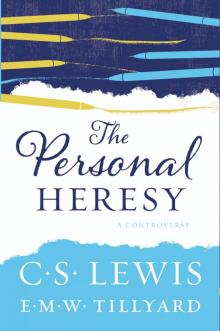 The Personal Heresy
The Personal Heresy The Lion, The Witch And The Wardrobe
The Lion, The Witch And The Wardrobe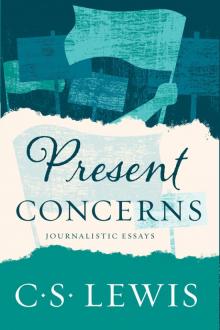 Present Concerns
Present Concerns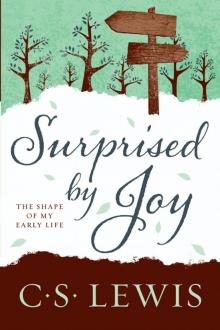 Surprised by Joy
Surprised by Joy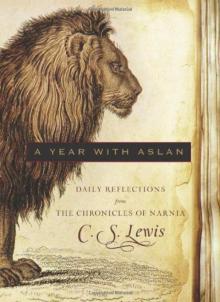 A Year with Aslan: Daily Reflections from The Chronicles of Narnia
A Year with Aslan: Daily Reflections from The Chronicles of Narnia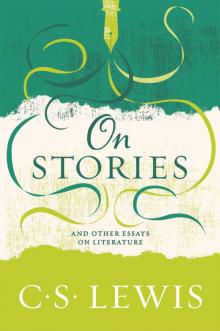 On Stories
On Stories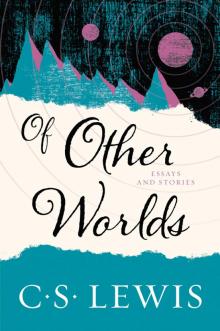 Of Other Worlds
Of Other Worlds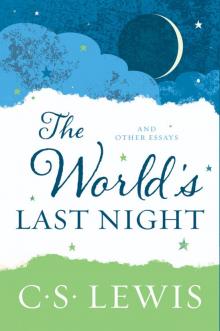 The World's Last Night
The World's Last Night The Discarded Image
The Discarded Image The Chronicles of Narnia Complete 7-Book Collection with Bonus Book
The Chronicles of Narnia Complete 7-Book Collection with Bonus Book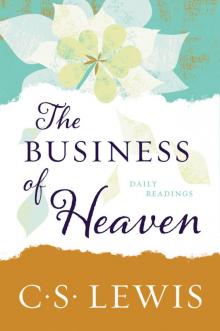 The Business of Heaven
The Business of Heaven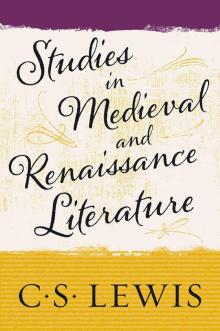 Studies in Medieval and Renaissance Literature
Studies in Medieval and Renaissance Literature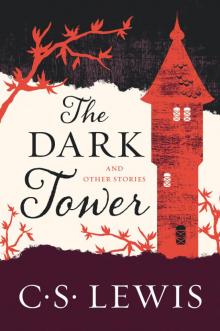 The Dark Tower
The Dark Tower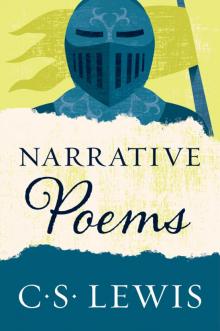 Narrative Poems
Narrative Poems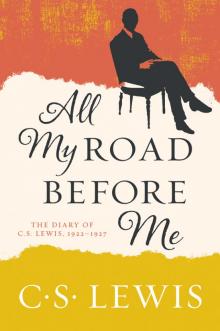 All My Road Before Me
All My Road Before Me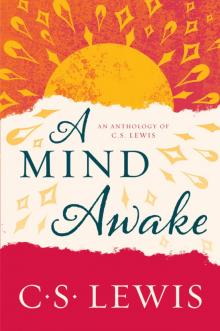 A Mind Awake
A Mind Awake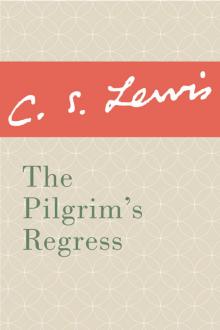 The Pilgrim's Regress
The Pilgrim's Regress